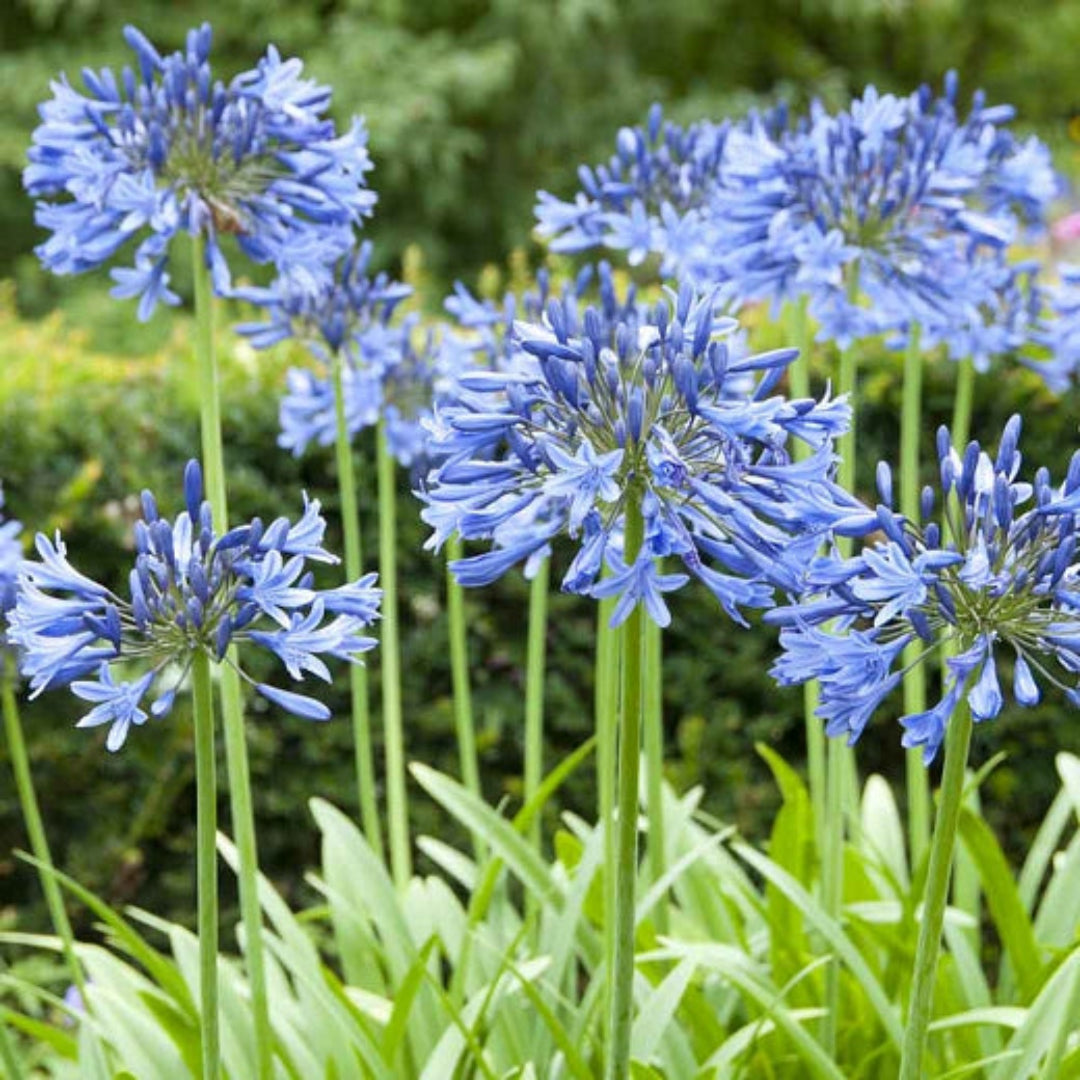Unleashing the Secret to Effective Agapanthus Growing: Advice for a Flourishing Yard
In the world of gardening, cultivating agapanthus efficiently calls for a calculated technique that includes numerous facets of plant care. By comprehending the subtleties of agapanthus growing, one can develop an environment where these plants prosper and flower abundantly.
Growing Agapanthus: Finest Practices
When growing Agapanthus, appropriate dirt prep work is essential for making sure successful development and growth of these stunning flowers. Agapanthus, commonly referred to as Lily of the Nile or African lily, prospers in well-draining dirt with a somewhat acidic to neutral pH level - Agapanthus. Prior to planting, it is essential to modify heavy clay soils with raw material such as compost or peat moss to improve water drainage and provide necessary nutrients for the plants
To grow Agapanthus, choose an area that receives complete sunshine to partial color, as this will certainly advertise healthy and balanced development and bountiful flowering. Dig a hole two times the diameter of the plant's origin sphere and place the Agapanthus at the same deepness it was previously growing. Carefully backfill the opening with dirt, weighing down firmly to get rid of any air pockets around the origins.
Water the newly grown Agapanthus thoroughly and remain to maintain the dirt uniformly wet, especially during the plant's active growing period. Agapanthus. Using a balanced fertilizer once a month can additionally support the plant's growth and flowering. By following these finest methods for growing Agapanthus, you can produce a sensational display screen of these captivating flowers in your yard
Suitable Dirt Conditions for Agapanthus
For ideal development and flowering success of Agapanthus plants, ensuring the dirt problems are excellent is vital. Agapanthus favors soil that is abundant in nutrients, so incorporating a well balanced plant food during the expanding period can promote healthy development and vivid flowers.

Watering and Fertilizing Tips
To make sure healthy development and lively blooms, proper watering and feeding strategies are necessary for successful Agapanthus farming. Agapanthus plants benefit from routine watering, specifically during the expanding season. It is advised to water deeply when a week, making sure the soil is damp but not waterlogged. Throughout warm climate or in pots, even more regular watering may be essential to avoid the soil from drying out entirely.
When it comes to feeding Agapanthus, a balanced fertilizer with equivalent parts nitrogen, phosphorus, and potassium can be used in the spring to promote healthy growth and flowering. Slow-release plant foods are suitable for giving nutrients slowly over an extensive period. Stay clear of over-fertilizing, as this More Bonuses can cause excessive foliage growth at the expense of blossoms.
Furthermore, incorporating raw material like compost into the soil can boost nutrient levels and enhance dirt structure, assisting in the general wellness of the Agapanthus plants. By adhering to these watering and fertilizing tips, gardeners can guarantee their Agapanthus plants prosper and produce spectacular screens of blossoms.
Pruning and Deadheading Techniques
Proper trimming and deadheading strategies play a vital duty in preserving the wellness and aesthetic appeals of Agapanthus plants, complementing the necessary practices of watering and web fertilizing for effective farming. Pruning Agapanthus includes getting rid of spent blossom heads, dead or yellowing fallen leaves, and overall shaping of the plant to advertise better development. Deadheading, the process of eliminating faded flowers, not only enhances the plant's look but also urges more blooming.
When deadheading Agapanthus, it is recommended to snip off the blossom stem at the base utilizing sharp, tidy shears. This process redirects the plant's energy from seed manufacturing back into origin and foliage development, promoting a healthier and extra durable plant. Regular deadheading can extend the growing duration of Agapanthus and protect against self-seeding, which can result in congestion.
In terms of pruning, Agapanthus generally benefits from a light trim after flowering to clean up the plant and encourage fresh growth. Reducing the invested blossom stems and getting rid of any broken or dead foliage aids maintain the plant's vigor and total appearance. Nevertheless, it is necessary to stay clear of cutting into the crown of the plant, as this can compromise its health.

Protecting Agapanthus From Pests and Diseases
Applying reliable pest and illness management methods is essential to securing the wellness and vitality of Agapanthus plants in growing. One usual pest that impacts Agapanthus is the Agapanthus borer, a caterpillar that tunnels right into the plant, causing damages to the fallen leaves and blossoms.
Along with insects, Agapanthus are vulnerable to diseases such as origin rot and fungal fallen leave areas. These concerns can typically be avoided by ensuring correct drainage and staying clear of overwatering. Impacted parts of the plant must be immediately eliminated to protect against additional spread if indicators of condition show up. Fungicides may additionally be utilized as a treatment action, following the manufacturer's directions thoroughly. By staying watchful and resolving bug and illness issues quickly, garden enthusiasts can assist their Agapanthus grow and thrive.

Final Thought
In verdict, successful farming of Click Here agapanthus requires proper growing techniques, suitable soil conditions, adequate watering and feeding, normal pruning and deadheading, and protection from insects and diseases. By following these ideas and techniques, gardeners can ensure a flourishing garden loaded with gorgeous agapanthus blooms. Agapanthus. Bear in mind to maintain constant care and focus to information to promote the wellness and longevity of these spectacular plants
When planting Agapanthus, correct soil prep work is important for making certain effective growth and development of these beautiful flowers.Water the freshly planted Agapanthus thoroughly and continue to keep the soil uniformly damp, specifically throughout the plant's active expanding season.For ideal development and flowering success of Agapanthus plants, making sure the soil problems are optimal is vital. When planting or transplanting Agapanthus, guarantee the soil is well-prepared to supply the essential structure for the plants to develop themselves effectively. One usual parasite that affects Agapanthus is the Agapanthus borer, a caterpillar that tunnels into the plant, triggering damage to the blossoms and fallen leaves.